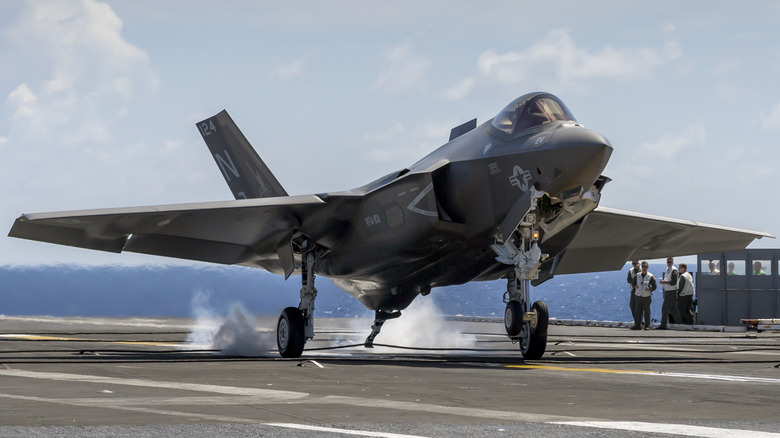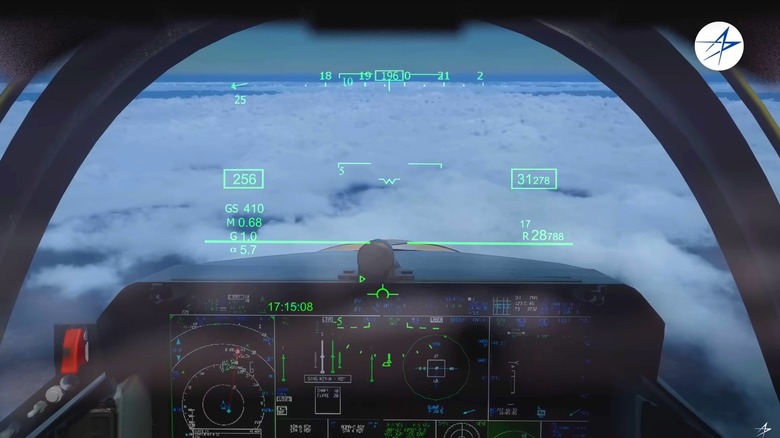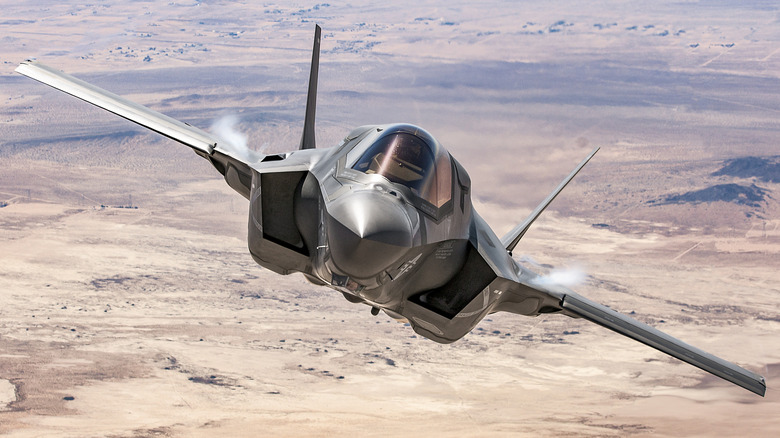What Does The Inside OF An F-35 Fighter Jet Look Like?
Lockheed Martin's F-35 Lightning II is widely regarded as one of the most advanced fighter jets currently in use. While its sleek exterior draws attention, much of its technological advantage lies inside. The cockpit incorporates systems like sensor fusion, electronic warfare tools, and a full helmet-mounted display, providing pilots with constant situational awareness. These features are configured to streamline complex missions and help keep pilots responsive in fast-changing combat situations.
Entering U.S. service in 2015, the F-35 has become a central part of U.S. and allied air forces, designed to replace a wide range of legacy aircraft with a single multirole platform. With a projected lifetime cost exceeding $2 trillion, it's one of the most expensive military programs ever reported. That investment reflects the jet's versatility as a platform designed for stealth, strike, and aerial combat across its three variants (A, B, and C).
What truly sets the F-35 apart from other fighters, though, is what the pilot sees inside. The F-35 cockpit is designed to reduce pilot workload and support complex task management through tightly integrated controls and displays. The Panoramic Cockpit Display (PCD) — a sizable single touchscreen that spans the dashboard and takes the place of conventional dials and gauges — is a key component.
Going inside the cockpit of an F-35 fighter jet
Pilots can arrange and view vital information in customizable layouts on this display, including radar feeds and weapon status. The Distributed Aperture System (DAS) feeds imagery to the pilot's helmet, providing 360-degree environmental visuals — even allowing them to "see through" the jet to monitor their surroundings. These tools allow pilots to always have a full tactical overview of the immediate airspace thanks to the Helmet-Mounted Display System (HMDS), which projects this data directly onto the visor.
While tactile controls, such as the throttle and side-stick controller, are ergonomically positioned to lessen fatigue during demanding missions, voice control systems enable pilots to issue verbal commands to select targets or adjust settings. Due to the HMDS's head tracking ability, pilots can activate sensors or weapons simply by looking at their target. Together, these cockpit systems allow the F-35 to adapt to any mission — whether it's a stealth strike, air-to-air combat, or electronic warfare.
F-35 is the aircraft for air superiority and strike missions
The F-35's modular tools and mission-grade avionics allow for a wide range of assignments. Its ability to fuse data from the radar, infrared targeting, and other onboard sensors into a single, unified picture for the pilot is one of its primary features. This cohesive image significantly enhances threat tracking and detection, facilitating quick, informed decisions. Strong software underpins this ability: The F-35's code counts over 24 million lines, far more than the 4 million used by older fighters like the F/A-18, allowing the jet to process enormous volumes of data in real time.
Through its shape and radar-absorbing materials, the F-35's stealth design reduces detection by enemy radar, increasing its survivability. Beyond concealment, however, the jet's sophisticated electronics suite can actively jam or fool radars on the ground and in the air. Although enemy forces might detect something on the radar, they still can't specifically target or track the jet.
The F-35 is engineered to transition quickly between precision strike missions and air-to-air combat due to its multirole fighter capabilities. It can reach high-value or defended targets because of its compatibility with munitions like the Joint Air-to-Surface Standoff Missile (JASSM) and Long Range Anti-Ship Missile (LRASM). All these features combined make the F-35 a flexible multirole platform suited for air superiority, conducting deep strikes, and operating in contested areas. Overall, the F-35's integration of stealth, intelligence systems, and adaptive combat roles positions it as one of the most capable jets flying today.


